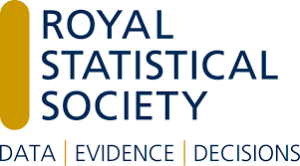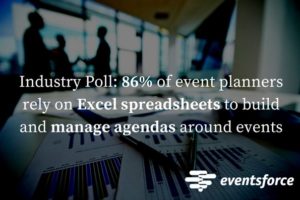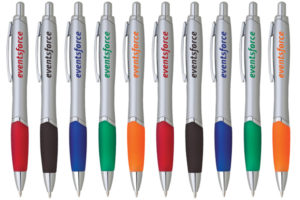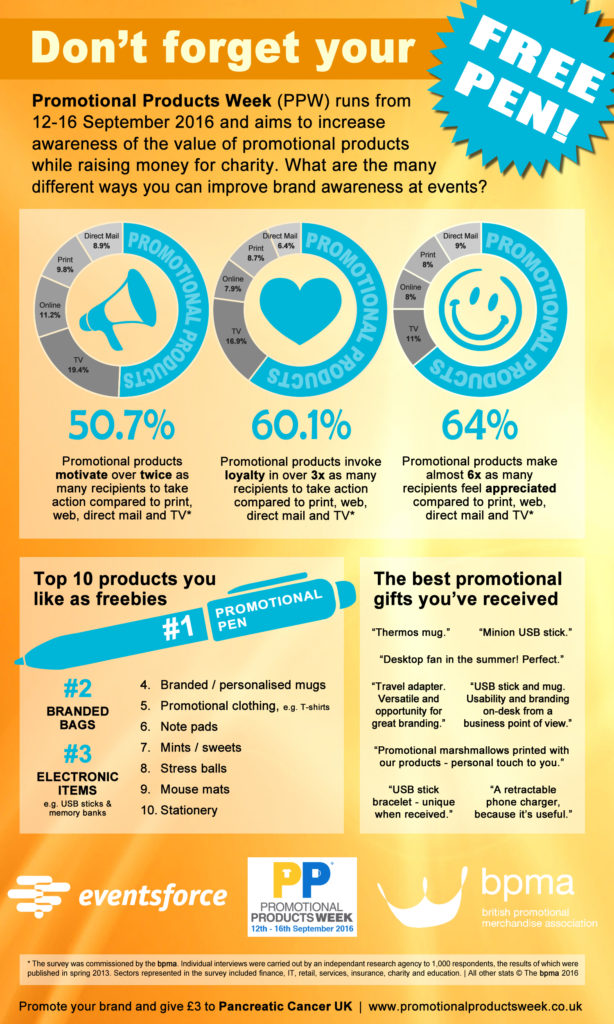 Technology is always pushing the boundaries on how we plan and run our events. From simple registration systems to sophisticated event management tools. From social media, live polling and event apps to the use of new technologies like GPS fencing and augmented reality.
Technology is always pushing the boundaries on how we plan and run our events. From simple registration systems to sophisticated event management tools. From social media, live polling and event apps to the use of new technologies like GPS fencing and augmented reality.
All these different technologies help us collect and manage valuable data around our events. And we all know how valuable this data can be. The more you make of it and the more you share it across your organisation, the more valuable it will become.
But the value of event data isn’t just limited to what we collect and analyse from all these different systems we use around our events. As event planners, we deal with many other business systems that help us manage information and processes around our events. It may be the customer data we have in our CRM solutions that helps us personalize attendee experiences. Or it may be the details of all the outstanding payments recorded in our finance system that can help us forecast revenue and cashflow. Or a list of all the transfer and hotel requirements we’ve recorded in our travel and accommodation booking systems.
The event data in these systems is just as important as the data we have in our registration systems or event apps. Yet all this data has traditionally sat in silos as it has been difficult to share information between them and all the other systems we use around our events. However, recent advancements in communication tools like APIs has made the process of data sharing a whole lot easier. And event planners are starting to see that having an event data ecosystem where all the different systems automatically talk to each other can bring them all sorts of benefits.
What Our Research Found
A recent joint study by Event Industry News and Eventsforce found that 60% of event planners are already integrating their event data with their organisations’ business systems, with CRMs, corporate websites solutions and finance coming up top.
The industry seems to recognize the importance of having an integrated system with 75% of respondents claiming it can have a significant impact on the hours spent doing admin work like data entry, reporting and chasing departments for relevant information. Other highlighted benefits include better data sharing, increased revenue and improved data security.
The study also found that factors such as cost, time and issues in managing multiple IT suppliers were seen as the top barriers to this type of data integration. Yet despite these challenges, only 25% of respondents felt integration was not a priority for them moving forwards.
Key Considerations
So, how do you decide which type of integration is right for your organisation?
The key thing here is that there isn’t one type of integration that’s right for everyone. Each organisation is different and each system is different.
What you need to ask instead is – what is my business need for integration? Can it help solve a particular problem around my events? Do you want to spend less time chasing updates with your finance team? Or do you want to cut out all the work you do copying data from one system to another? Or maybe you want more synergy between your marketing and event campaigns?
All of these issues (and many more) can be addressed by integrating your event data with some of your organisation’s other business systems.
Have a look below at why companies like Schroders, Haymarket and RSS decided to integrate their event data, how they went about it and the impact it had in the way they manage their events:
 1. Schroders: Events and CRM Integration
1. Schroders: Events and CRM Integration
Schroders is a global asset management company running hundreds of meetings and conferences each year.
The Challenge:
As most of Schroder’s events target their customers and investor contacts around the world, invitation lists were usually compiled by account managers who owned these client relationships. The lists would be put together using the company’s Salesforce CRM solution and would then have to be manually uploaded to the Eventsforce event management system, which would track and manage registrations around each event.
The problem was that as account managers had no access to the data in Eventsforce, the events team would spend a lot of time providing them with regular attendance updates and reports. All the registration data recorded in Eventsforce needed to be manually uploaded into the CRM system – which was time-consuming, inefficient and prone to error. It also meant that the sales team didn’t have real-time visibility on which of their contacts were attending their events or which events and sessions they had engaged with in the past.
The Solution:
Schroders decided to integrate Eventsforce with the company’s Salesforce CRM system in an effort to improve data sharing between the two departments. The integration allows the events team to automatically pull invitation lists from Salesforce directly into Eventsforce, without the need for manual uploads. More importantly, any updates around invitations or registrations that are recorded in Eventsforce are instantly updated within the CRM system in real-time.
The integration saves the events team a lot of time transferring data between the two systems, chasing responses and collating reports – helping them focus their efforts on other aspects of the events.
On the other hand, account managers have access to the most up-to-date information on how many of their contacts are attending an upcoming event. It also helps them decide whether or not they need to encourage people to register (instead of the less personal follow-up call from the events team) or if they want to arrange meet ups before or at the event.
“The integration between our event management and CRM systems has helped us see what value our event activities are providing to our organisation. With better data sharing between the two departments, we have also saved a considerable amount of time collating reports and transferring data between the two systems,” said Viki Stapleton, Events Manager, Schroders.
 2. Haymarket: Events and Finance Integration
2. Haymarket: Events and Finance Integration
As one of the largest media and publishing companies in the UK, Haymarket has a portfolio 120 events that gather over 20,000 attendees each year – from award ceremonies and gala dinners to conferences and breakfast briefings.
The Challenge:
The company deals with an incredibly high volume of payment transactions around its events – so having the ability to track funds was a top priority for the events team. Yet the system they had in place was inefficient and didn’t give them the financial insight they required.
Each night, a list of payment transactions recorded in the events system would be sent to the company’s accounting system via file transfer. As the data flow only flowed one way between the two systems, the events team didn’t have a real-time view of when the finance department issued invoices and when payments were actually coming in.
As a result, a lot of time was wasted chasing the finance team for the latest updates. The daily file transfer also meant there was always a gap between the time attendees completed their registrations and the time it took the accounts team to issue their invoices.
The Solution:
The events team wanted to take control of the entire invoicing process and decided to address the issue by integrating its events and finance systems together. Now, each time an attendee completes an online registration form or submits an award entry, their financial information is automatically sent to the finance system, however invoices are generated directly through the events system.
This allows the events team to easily chase payments before the start date of each event by pulling up automatic reports on outstanding invoices and contacting attendees through one quick email. The integration has not only simplified processes but has also meant that most of its events can kick off with very few outstanding payments.
Not sure if data integration is right for you? Get a FREE copy of the ‘Save Time & Do More with Your Event Data’ eBook – a comprehensive easy-to-read guide from Event Industry News and Eventsforce that gives you everything you need to know about integrating your event data with other business systems (CRM, marketing, finance, membership).
“The integration between the two systems has been critical to our cashflow. It has really given us the visibility we need regarding the financial situation of each event and has also helped us reduce a lot of administrative work around managing attendee payments,” said Carla Jones, head of event operations and client services, Haymarket Events.
 3. The Royal Statistical Society (RSS): Events and Membership Integration
3. The Royal Statistical Society (RSS): Events and Membership Integration
As one of the leading organisations promoting the importance of data and statistics around the word, RSS has an active events portfolio running around 100 meetings and events for members and non-members each year.
The Challenge:
The organisation has integrated its events and membership systems together so that it can provide automatic membership check as part of its online event registration process. The integration makes sure that RSS event attendees are going through the right registration channels and non-members are not paying discounted member fees.
The Solution:
Each time an attendee selects the ‘member’ box on the registration form, their email address is automatically checked against the RSS membership system. If the membership is valid, attendees can continue with their registrations – otherwise the system will ask them to try again.
 RSS Conferences and Events Manager, Paul Gentry, commented: “Without integration between the two systems, non-members could have registered as members as we wouldn’t have had the time or resources to manually check the status of the hundreds of members that attend our events each year. But with this system in place, we are confident that the membership status of each attendee is accurate and more importantly, everyone is paying the correct registration fee.”
RSS Conferences and Events Manager, Paul Gentry, commented: “Without integration between the two systems, non-members could have registered as members as we wouldn’t have had the time or resources to manually check the status of the hundreds of members that attend our events each year. But with this system in place, we are confident that the membership status of each attendee is accurate and more importantly, everyone is paying the correct registration fee.”
The integration secures a key revenue stream for RSS and it also saves the events team considerable time chasing payments from those people who may have otherwise registered under the wrong category.
It also helps RSS address queries around memberships a lot more quickly. So, if a particular membership has lapsed, a notice can show up on the registration form advising users to contact the membership services team.
 An industry poll from Eventsforce last month found that an overwhelming 86% of event planners rely on Excel spreadsheets to build and manage agendas around their events. Which makes sense if your agenda has a simple one-track format. But what happens when you’re dealing with a multi-track event? What if you have a three-day conference where attendees can pick and choose which sessions they want to attend? What if a last-minute change to your keynote impacts the timings of some of your other sessions?
An industry poll from Eventsforce last month found that an overwhelming 86% of event planners rely on Excel spreadsheets to build and manage agendas around their events. Which makes sense if your agenda has a simple one-track format. But what happens when you’re dealing with a multi-track event? What if you have a three-day conference where attendees can pick and choose which sessions they want to attend? What if a last-minute change to your keynote impacts the timings of some of your other sessions?








 Despite living in a digital age it seems that we just can’t get enough of a free pen. New research from the British Promotional Merchandise Association (bpma) shows that the number one product people in the UK like to take home as a freebie is a promotional pen. However, promotional products are often seen as an afterthought rather than an integral part of a marketing campaign.
Despite living in a digital age it seems that we just can’t get enough of a free pen. New research from the British Promotional Merchandise Association (bpma) shows that the number one product people in the UK like to take home as a freebie is a promotional pen. However, promotional products are often seen as an afterthought rather than an integral part of a marketing campaign. If you want your brand to be remembered then you might need to think outside the box. Last year, almost £1bn was spent by companies on promotional merchandise with an average spend of £5 per item. Gordon Glenister, Director General of the bmpa, told Eventsforce: “Promotional products are one the most powerful advertising mediums in existence. When a branded giveaway is relevant to the organisation and is useful, recipients will keep it on average for almost three years.” The more unusual items people have received includes plants, ice creams and shoe polish while the more praised items mentioned in the research were retractable phone chargers, desktop fans and travel adapters.
If you want your brand to be remembered then you might need to think outside the box. Last year, almost £1bn was spent by companies on promotional merchandise with an average spend of £5 per item. Gordon Glenister, Director General of the bmpa, told Eventsforce: “Promotional products are one the most powerful advertising mediums in existence. When a branded giveaway is relevant to the organisation and is useful, recipients will keep it on average for almost three years.” The more unusual items people have received includes plants, ice creams and shoe polish while the more praised items mentioned in the research were retractable phone chargers, desktop fans and travel adapters.







